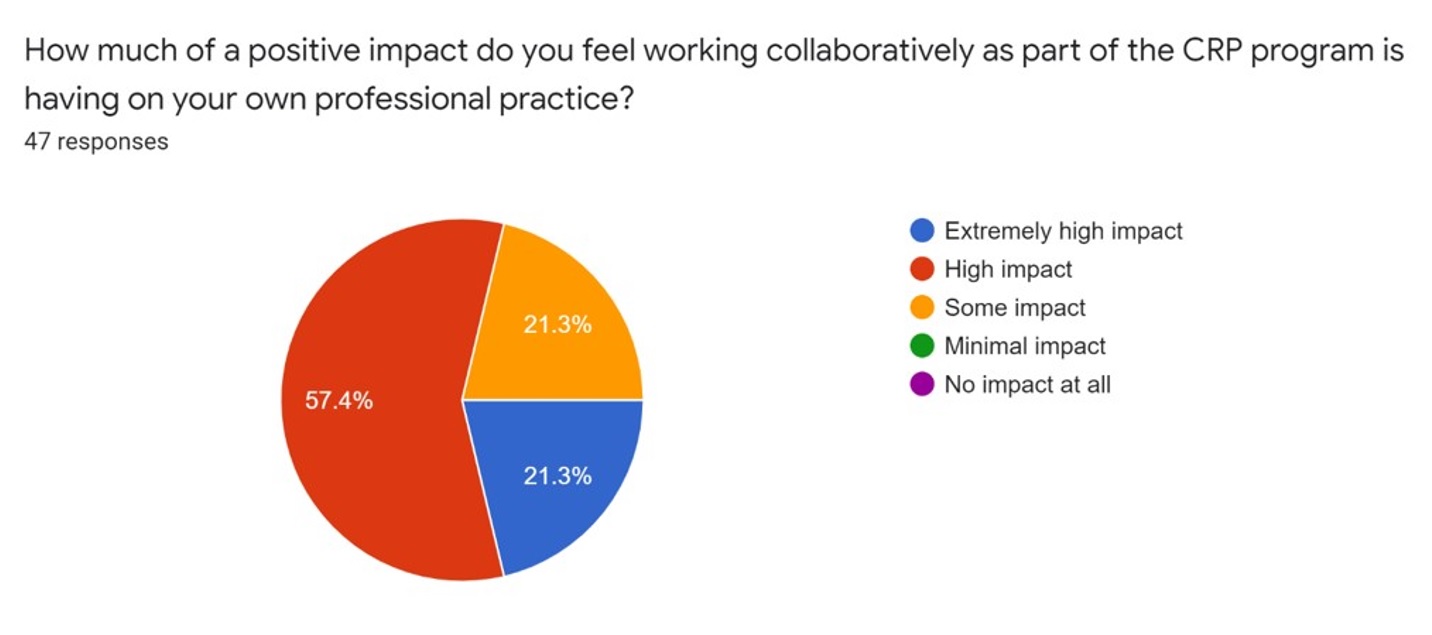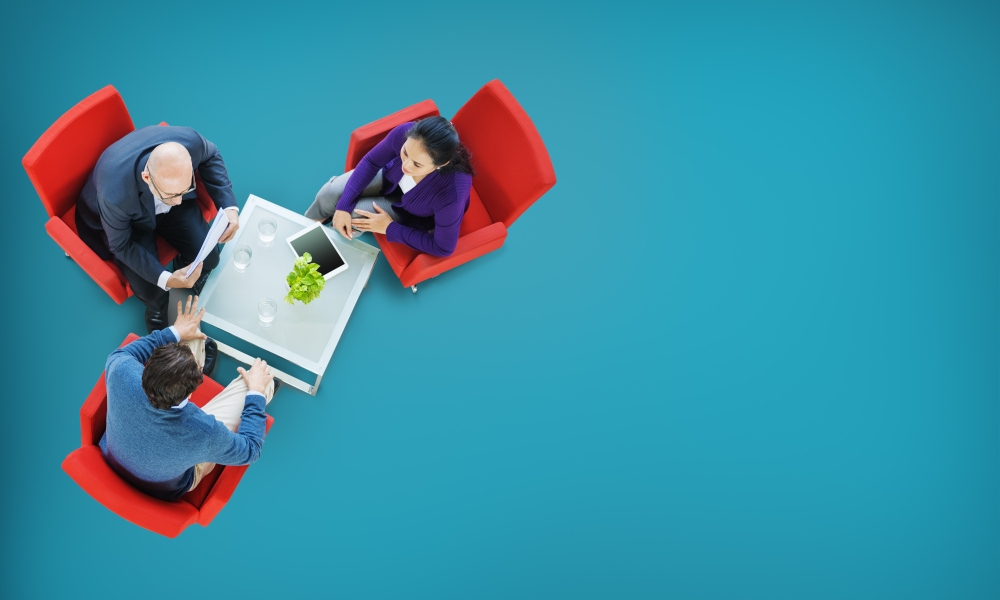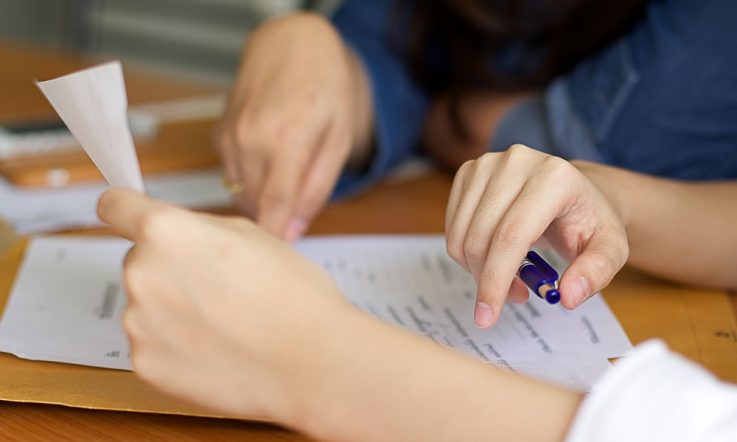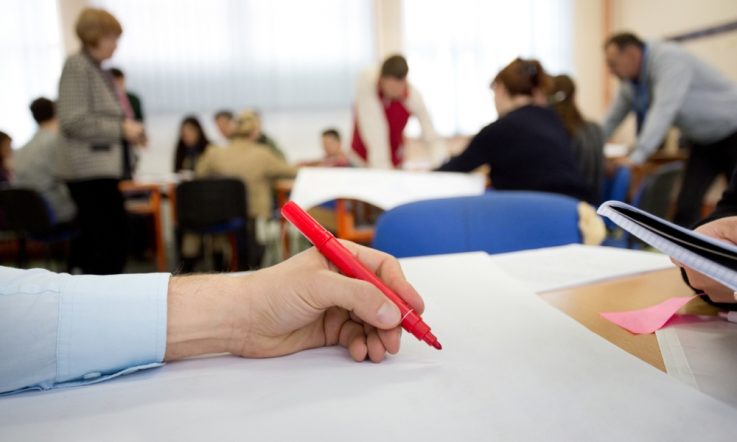The Collaborative and Reflective Practices (CRP) Program at Villanova College in Brisbane aims to improve teaching practice by bringing teachers together, to allow them to collaborate and discuss the impact they have on their students, and trial and implement new strategies with the support of their peers.
John Hattie (2009) asserts the most successful schools are the ones that continually seek to find evidence of their impact. As teaching is an incredibly diverse and often autonomous job, we found the need to provide a space and structure for staff to ask questions about their practice, reflect on their strengths and weaknesses and safely step outside their comfort zones.
The CRP program at our school began in 2014 with one ‘pod', which included seven teaching staff from the Middle School Maths & Science Department. It was an opportunity to reflect on pedagogy and discuss topics of interest, as well as share ideas, research and what was happening in their classrooms. Today there are 10 pods, involving over 80 staff across 11 different year levels and departments.
The Art and Science of Teaching
The program uses Robert Marzano's The New Art and Science of Teaching (2017) framework as a basis to guide reflections and professional growth. This complements AITSL's Australian Professional Standards for Teachers so that staff are able to very clearly identify their strengths and areas for improvement when it comes to student learning and quality teaching. Teachers complete a self-reflection of their proficiency across 43 key elements of ‘best practice' relating to feedback, content delivery, relationships and behaviour management. They meet with me, in my role as CRP Facilitator, to discuss strategies they could implement in their classroom to improve their practice in a particular element and go about collecting evidence through lesson reflections.
These reflections are then shared with their pod throughout the course of a year, where they are able to affirm their achievements and discuss ways to improve in the future. Other pod members complete a peer reflection for the presenting staff member and offer feedback or suggestions for further growth. We have found that this process often stimulates deep reflective and engaging conversation around various teaching strategies that are beneficial for all involved.
Examples of study areas
Our teachers have reflected on a wide range of strategies and pedagogy, including:
- Classroom layout, including the physical space, furniture and student groupings;
- Engaging students through physical movement, academic games, or complex tasks;
- Revision strategies and study practices;
- Flipped learning;
- Problem-based and hands-on learning;
- Differentiation and cooperative learning; and,
- Student wellbeing and strengthening student-teacher relationships.
- A focus on effective feedback
In 2018, leadership recognised the need to develop a strong focus on formative assessment. Research by Paul Black and Dylan Wiliam (1998) suggests ‘assessment should support instruction, rather than just measure its outcomes'. Hence, the Effective Feedback Action Research Pod was developed and is currently in its third year.
The pod began with a research review into formative assessment and feedback practices to gain insight into best practice. Members then trialled various techniques to provide students with feedback on how they are progressing and what they need to improve on achieve greater academic success. This led to the creation of numerous resources and strategies for all staff, available through our library website. The pod also surveyed students about the feedback strategies to gain their perspective. In 2020, the pod aims to continue to upskill staff and implement a policy on how feedback is delivered at the college, and drive our recently introduced continuous reporting framework.
Co-teaching action research
Last year, the Year 5 and 6 pods were amalgamated and, along with the Year 7 pod, have moved to a co-teaching action research focus. With the new Junior School and Year 7 innovative learning precincts ready for students in 2020/21, we saw a need for teachers to have a space to discuss co-teaching and trial strategies, review research, and develop procedures for what this will look like at Villanova over the coming years. Staff in these year levels have worked hard to adjust their pedagogy so that our students are being offered the most innovative and engaging teaching and learning available.
It's not just our classroom teachers who are part of CRP, in 2019 our Instrumental Music staff began their collaborative and reflective journey focusing on learning goals, success criteria and feedback.
Impact on students and teachers
Educating students is our number one priority. Throughout the CRP journey, staff have actively engaged students in feedback and surveys about how they learn best and perceive the teaching that is happening in the classroom. This is excellent feedback for our teachers and allows them to adjust their pedagogy based on what works best for the students in our care. John Hattie's (2020) research into collective teacher efficacy indicates that staff and schools who believe in their ability to positively affect student accomplishments, have a strong correlation with student achievement. Many of the initiatives that have been investigated through CRP have resulted in increased academic results, and we continue to monitor the impact of the program. We've also survey teachers about impact CRP is having on their own practice.

The focus on supporting and learning from each other has made a big difference to our teachers. When asked which CRP activities in particular had been valuable for them this year, professional collaboration and discussion topped the list (chosen by 94 per cent); followed by listening/watching my peers share their teaching practice (75 per cent).
Staff success outside of CRP
As a result of CRP, staff have been encouraged to investigate areas of education that they are passionate about. This has led to achievements outside of the program, such as having their work published in education journals, being invited to present at and attend conferences here in Australia and overseas, school visits, and progression into leadership roles. All this experience and diverse learning by our teaching staff is great for our students here at Villanova.
References and related reading
Black, P., & Wiliam, D. (1998). Assessment and classroom learning. Assessment in Education: principles, policy & practice, 5(1), 7-74.
Hattie, J. (2009). Visible learning: A synthesis of over 800 meta-analyses relating to achievement. Routledge.
Marzano, R. J. (2017). The New Art and Science of Teaching: More Than Fifty New Instructional Strategies for Academic Success. Solution Tree Press.
Nottingham, J. (2020). HATTIE: Collective efficacy [Video]. Vimeo. https://vimeo.com/267382804
Association for Middle Level Education. (2012). This we believe in action: Implementing successful middle level schools.
Members of the CRP at Villanova College complete a self-reflection of their proficiency, using the Australian Professional Standards for Teachers. What are your strengths and areas for improvement? How often do you review these and the progress you’re making?
As a school leader, do you provide opportunities for staff to come together to reflect on their teaching and the needs of their students?



